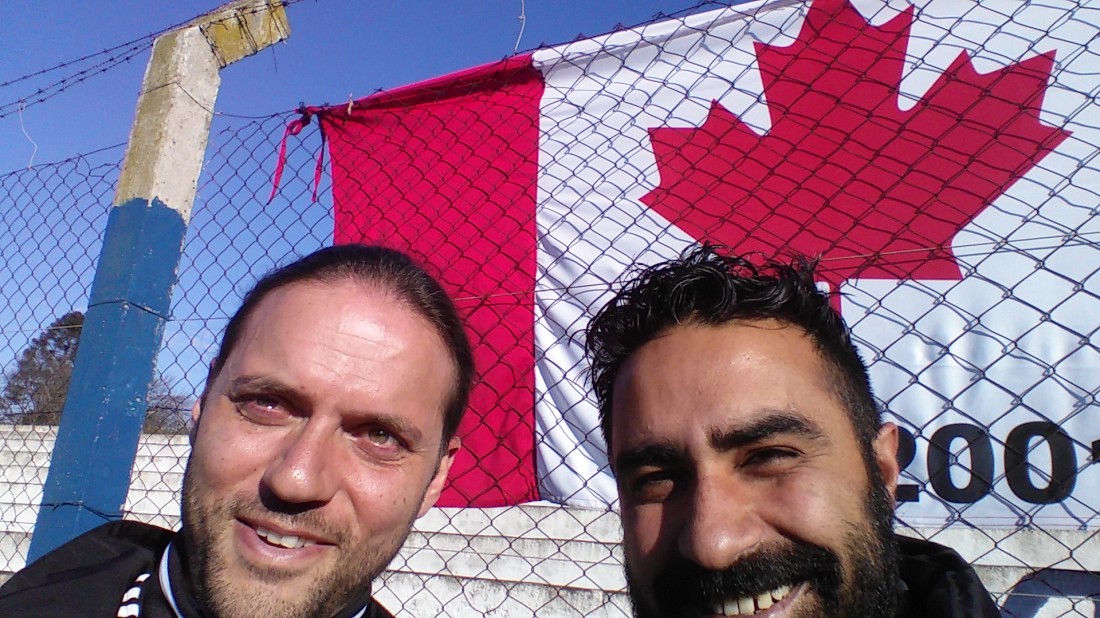This weekend we worked at 5 different games for the Academy, with teams ranging in age from U14-U19. We got to see some other stadiums and facilities from professional clubs in the city, and of course got to meet and speak with the coaches and fitness coaches from all of the different teams. Interestingly, there is one fitness coach who works exclusively with each Academy team. And not just in our club – all of the clubs in Uruguay with academies have one fitness coach working exclusively with one of their teams/age categories. Imagine that!
Among the topics I discussed with the coaching staff this weekend was the subject of player development. More specifically, I was questioned by several coaches about the system we have in Canada, and the methods – if any – we use to develop our players.
In Uruguay, the development – and eventual sale – of players is an integral part of the livelihood of all professional soccer clubs, including Canadian SC, the club that I am working with.
While Uruguayan clubs do earn a small amount of revenue from the rights to television broadcasts of their matches, and an even smaller amount from live attendance at the matches themselves, the money earned from selling players developed through their own academies to other – typically larger and wealthier – clubs, is literally the only way for a Uruguayan professional soccer club to survive in the long term.
Prospective revenue from the sale of homegrown players is thus a primary incentive for all professional soccer clubs in Uruguay, to do the best possible job they can to develop their own players. Furthermore, players developed through a club’s own academy can also play professionally for the club’s first team, thereby saving the club from the expense of having to purchase other players developed in other clubs.
This isn’t rocket science, and Uruguay is just one of literally dozens of counties around the world whose youth soccer systems function in this way.
Yet, when attempting to explain to my Uruguayan colleagues how our own Canadian system of player development functions, I found myself at a loss as to why – even in our own domestic professional academies in Major League Soccer – there is no financial incentive for youth clubs to develop and sell their own homegrown players.
I have written about this topic in the past, in an article which also questioned why our domestic professional clubs are not incentivised to win via a promotion/relegation system. Below is a link to that article:
The 2 Missing Ingredients for Success in Canadian Soccer
Among the different Uruguayan coaches and fitness coaches I spoke with over the weekend, the consensus regarding player development was clear: without a strong financial incentive to develop and sell players, youth soccer clubs and academies in Canada – even those which are connected to domestic professional clubs – will never truly be motivated to become experts at developing professional players.
Simply being able to say “I used to coach that kid when he was younger” does not constitute adequate motivation for any coach or club in Canada to really invest all of their time, energy and resources into proper, professional player development.
Until all Canadian clubs and academies have very clear financial incentives, we will likely never reach our full potential when it comes to the development of professional soccer players.
After watching 3 straight Academy matches today, we capped off the day by catching the Euro 2016 Final between France and Portugal, which means I have basically spent the past 10 hours of the day watching soccer – and I’m still not tired of it! Tomorrow is an off day before we get the last round of fitness assessments done with the Academy on Tuesday and Wednesday.
I am looking forward to seeing what comes next!


Leave A Comment